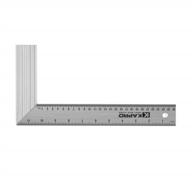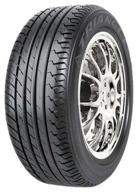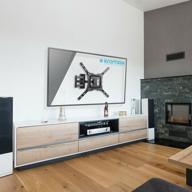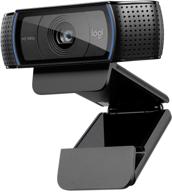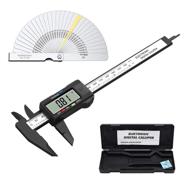Another interesting products


23 Review



8 Review

Choosing the Right Calipers
Calipers are essential measuring tools for many professionals and hobbyists. With the variety of types, sizes, and features available, selecting the right caliper for your needs is important.
Types of Calipers
The three main types of calipers are:
- Dial calipers - These feature a round dial display for easy and precise measuring. The dial display allows for incremental readings.
- Digital calipers - Digital calipers provide readings on an LCD display screen. They offer precision to 0.01mm or 0.0005 inches.
- Vernier calipers - With two adjustable vernier scales, these calipers require some practice to read but offer accuracy up to 0.02mm or 0.001 inches.
Caliper Uses
Common uses and types of measurements include:
| Caliper Type | Typical Uses |
|---|---|
| Outside measurement calipers | Measure the external dimensions of objects |
| Inside measurement calipers | Measure internal dimensions like holes or recesses |
| Depth measurement calipers | Measure the depth of holes, spaces and steps |
Key Features
When selecting calipers, key features to consider include:
- Measurement range - Will you need small precision calipers or larger general use models?
- Resolution - This is the smallest unit the caliper can measure, 0.01mm for example.
- Accuracy - The closeness of the measurements to the actual value.
- Lock screw - This securely locks moving parts in place when not measuring.
- Depth rod - Allows internal depth measurements.
Caliper Materials
Calipers are made from various materials including:
- Hardened stainless steel - Offers durability and corrosion resistance.
- Carbon fiber - Lightweight yet rigid material.
- ABS plastic - Lower cost but less sturdy option.
Higher priced calipers tend to use better materials for improved longevity and performance.
Budget
Caliper prices range from under $10 for basic plastic models to over $100 for high end digital calipers. Consider how often you will use the calipers and your need for precision when setting your budget.
Taking the time to evaluate your measurement needs and compare the types, features and materials will help you select the best calipers for the job.
Types of Calipers and Their Uses
Calipers are precision measuring instruments used across many trades and industries. There are several types of calipers, each suited for specific measurement applications.
Dial Calipers
Dial calipers are one of the most popular types due to their ease of use. They feature a large rotating dial display for clear and precise measurements. The dial allows for incremental measurements as fine as 0.001".
Typical uses:
- Measuring diameter of round objects
- Width measurements
- Step and depth measurements
- Comparative measurements
Digital Calipers
Digital calipers provide the precision of dial calipers with an electronic LCD display. They can measure to a high degree of accuracy, typically 0.01mm or 0.0005".
Common uses:
- Precision engineering measurements
- Measuring prototypes and product samples
- Quality control inspection
Vernier Calipers
Vernier calipers utilize two adjustable vernier scales allowing the user to read measurements between two graduation marks. This type requires some skill to read but provides excellent precision.
Typical vernier caliper uses:
- Science and lab work
- Measuring during product design
- Precision machining
Specialty Caliper Types
Some other common caliper types include:
- Inside calipers - For measuring internal dimensions
- Outside calipers - Measure external object dimensions
- Depth calipers - For measuring depths of steps, holes and recesses
Selecting the right type of caliper for the application is important for precise and reliable measurements.
Similar products
Digital vs Dial vs Vernier Calipers
When choosing calipers for measuring tasks, three main types are available - digital, dial, and vernier. Each has advantages and disadvantages.
Digital Calipers
Digital calipers provide the highest precision of the three types, with accuracy up to 0.01mm or 0.0005". Measurements are displayed clearly on an easy-to-read LCD screen.
- Very precise measurements
- LCD screen is easy to read
- Quick one-handed operation
- Some models are IP54 rated for water resistance
- May require calibration
- Require batteries
Dial Calipers
Dial calipers feature a large rotating dial display for taking measurements. The dial allows for increment measurements as fine as 0.001".
- Dial display provides clear readings
- Smooth dial movement
- No batteries required
- Slightly less precise than digital
- Dial requires more visual focus when reading
Vernier Calipers
Vernier calipers use two adjustable vernier scales for very precise measurements between graduation marks. They require some skill to read.
- Most accurate of the three types
- All mechanical, no batteries
- More difficult to read the vernier scale
- Not as fast to use as digital or dial
Summary
For most applications, dial and digital calipers provide the best combination of accuracy, ease of use, and convenience. Vernier calipers are best suited for jobs requiring the highest precision where the time to read the scales is not an issue.
Consider the required precision, work environment, and convenience when choosing between digital, dial, and vernier calipers for your measuring needs.
Caliper Precision and Accuracy
Precision and accuracy are important specifications to consider when selecting calipers for measurement tasks.
Caliper Precision
Precision refers to the degree of repeatability of a measurement. It is the smallest increment that can be detected by the caliper.
- Digital calipers typically have a precision of 0.01mm or 0.0005 inches.
- Dial calipers can measure as precisely as 0.001 inches.
- Vernier calipers are the most precise at 0.02mm or 0.001 inches.
Higher precision calipers allow for very fine measurements and minor changes to be detected.
Caliper Accuracy
Accuracy is the degree to which the caliper's measurements match the actual dimensions of an object being measured.
Factors affecting accuracy include:
- Calibration - Regular calibration ensures accuracy is maintained.
- User technique - Careful measureing improves accuracy.
- Wear - Damage over time reduces accuracy.
Caliper accuracy is commonly ±0.02mm or ±0.001". Better quality calipers can provide ±0.01mm or ±0.0005" accuracy.
Improving Accuracy
Steps to help improve measurement accuracy include:
- Calibrate the caliper routinely
- Ensure proper zero setting
- Carefully align the jaws with the object
- Apply consistent, moderate force when measuring
- Take multiple measurements and average the result
Maintaining Caliper Accuracy
To maintain the designed accuracy:
- Protect calipers from drops and shocks
- Clean slider surfaces and keep lightly oiled
- Replace batteries before they run down
- Store calipers properly when not in use
With proper use and handling, quality calipers will provide years of consistent precision and accuracy.
Additional Features to Look for in Calipers
Beyond the basic measurement capabilities, calipers are available with additional features that can improve performance, convenience, and versatility.
Fine Adjustment
The fine adjustment knob allows for small, controlled adjustments to the jaws for precision measurements. This is useful when approaching the final dimension.
Depth Rod
A depth rod or probe extends from the back of the caliper, enabling easy measurement of depths, steps, and recesses.
Locking Screw
The locking screw securely holds the jaw position so measurements can be transferred or compared. This prevents accidental bumps altering the setting.
Removable Jaws
Some calipers allow the jaws to be removed and swapped out. This allows custom jaws for specific measurement tasks to be fitted.
Interchangeable Rods
Removable depth rods of various lengths can be exchanged to suit different depth measurement needs.
Thumb Roller
The thumb roller allows easy sliding of the movable jaw with one hand operation. This improves ergonomics.
Battery Indicator
Digital calipers with a low battery warning help avoid inaccurate readings from failing batteries.
Extra Jaw Faces
Some calipers come with smooth or serrated removable jaw faces for measuring soft or round objects.
Quick-Change Jaw System
A quick-change system allows efficient changing between inside, outside, depth, and specialty jaws as needed.
Consider your measurement tasks and needs when deciding if any additional features will provide worthwhile benefits for your caliper usage.
Top products in 📏 Calipers
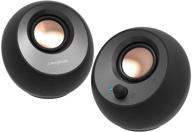

8 Review

Caliper Sizes and Measuring Range
Calipers come in a variety of sizes to measure objects big and small. Selecting the proper size caliper with the appropriate measuring range for your application is important.
Mini Calipers
Mini calipers have a range around 0-3 inches or 0-75mm. They are ideal for small, high precision work such as electronics, models, coins, and jewelry.
Standard Calipers
The most common size, standard calipers measure from 0-6 inches or 0-150mm. They work for general purpose applications, prototypes, and machining.
Long Calipers
Long calipers have an extended range up to 36 inches (1 meter) for larger measurements. These are useful for automotive, woodworking, and industrial uses.
Specialized Ranges
Some other available size ranges include:
- 0-12" range for general purpose and toolroom use
- 0-24" range for industrial and manufacturing
- Custom ranges for specific applications
Consider Required Resolution
The smaller the increments a caliper measures in, the higher the resolution. Smaller calipers often have higher resolution:
- Mini calipers - 0.01mm or 0.0005"
- Standard calipers - 0.02mm or 0.001"
- Long calipers - 0.05mm or 0.002"
Ensure the caliper has the appropriate resolution for your measurement needs.
Digital vs Dial vs Vernier
Digital calipers maintain high 0.01mm resolution across all sizes. Dial and vernier long calipers may have reduced resolution around 0.02mm.
Select a caliper size that covers your expected measurement range with the resolution and precision required.
What Are The Most Popular Calipers For Measuring Small Parts??
Based on the search results, here are some of the most popular calipers for measuring small parts:
- Pocket Caliper - This type of caliper is small and compact, making it ideal for measuring small parts on the go. It is available in different materials such as brass and metal.
- Digital Caliper - Digital calipers are highly accurate and can provide measurements in both inches and millimeters. They are easy to read and can measure small parts with precision.
- Vernier Caliper - Vernier calipers are a traditional type of caliper that can measure small parts with high accuracy. They are available in both analog and digital versions.
- Micrometer - Micrometers are another type of measuring tool that can provide highly accurate measurements for small parts. They are available in both analog and digital versions.
Overall, the most popular calipers for measuring small parts are those that are highly accurate, easy to read, and can provide measurements in both inches and millimeters. Digital calipers, vernier calipers, and micrometers are all popular choices for measuring small parts.
What Are The Differences Between Digital And Analog Calipers??
Here are the differences between digital and analog calipers:
Digital Calipers:
Analog Calipers:
Overall, the main differences between digital and analog calipers are their method of measurement and ease of use. Digital calipers are easier to read and provide instant measurements, while analog calipers use a mechanical system and require more skill to read. Digital calipers are highly accurate and can provide measurements in both inches and millimeters, while analog calipers are not as accurate and often only provide measurements in one unit of measurement.
What Are The Advantages Of Using Digital Calipers Over Analog Ones??
Here are the advantages of using digital calipers over analog ones:
- Easier to read: Digital calipers have an LCD display that shows the measurement instantly, making them easier to read than analog calipers.
- Highly accurate: Digital calipers are highly accurate and can provide measurements in both inches and millimeters.
- Can measure small parts: Digital calipers can measure small parts with precision.
- Can provide instant measurements: Digital calipers display the measurement instantly, making them faster to use than analog calipers.
- Can convert units easily: Digital calipers can easily convert from inches to millimeters.
- Shock-proof: Digital calipers are shock-proof, making them more durable than analog calipers.
Overall, the main advantages of using digital calipers over analog ones are their ease of use, accuracy, and ability to measure small parts with precision. Digital calipers are also faster to use and can easily convert units, making them a popular choice for professionals and hobbyists alike.





